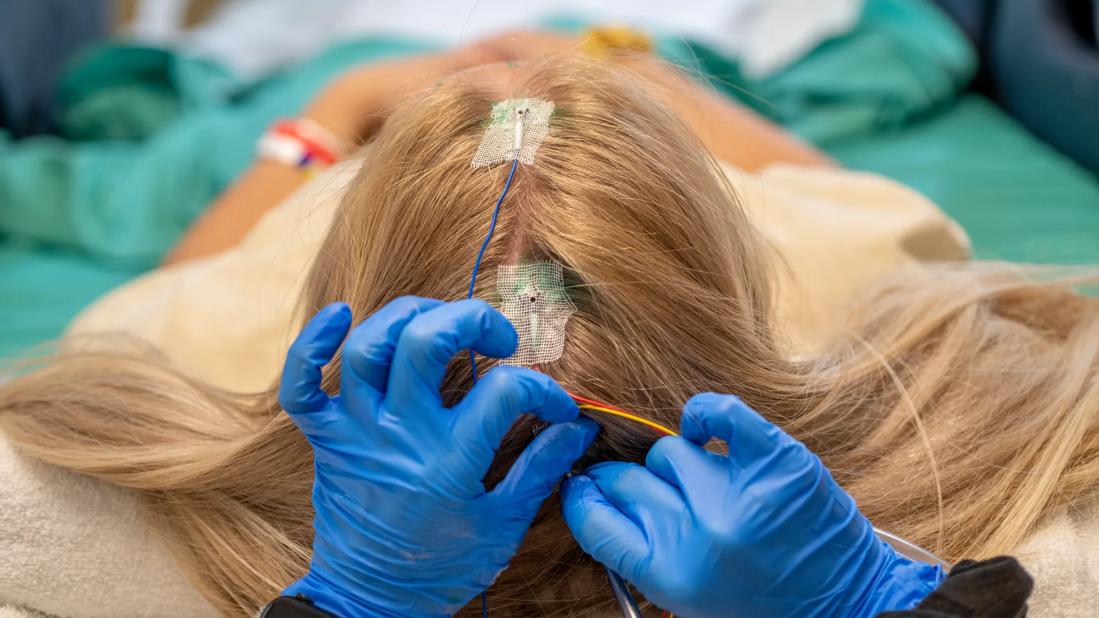Grant enables pooling of genomics, molecular medicine, animal models, advanced neuroimaging

Investigations are underway by a team of Cleveland Clinic clinicians and researchers to discover novel methods of matching patients who have epilepsy with optimal individualized therapy. The research — supported by a new $900,000 Research Centers of Excellence grant from Cleveland Clinic’s Lerner Research Institute — combines the efforts of clinicians and scientists with expertise in molecular and genetic medicine, animal modeling and state-of-the-art neuroimaging aimed at discovering ways to better anticipate epilepsy treatment response.
Advertisement
Cleveland Clinic is a non-profit academic medical center. Advertising on our site helps support our mission. We do not endorse non-Cleveland Clinic products or services. Policy
“Predicting patients’ predispositions and outcomes is a major challenge in epilepsy management, whether it’s determining who has drug-resistant epilepsy, who will experience disabling side effects from medications or who will be an ideal surgical candidate,” says epileptologist Lara Jehi, MD, a co-recipient of the grant and Research Director of Cleveland Clinic’s Epilepsy Center.
“We aim to move the field beyond the use of a trial-and-error process to one that matches patients to the best therapy based on their individual traits,” adds grant co-recipient Charis Eng, MD, PhD, Chair of Cleveland Clinic’s Genomic Medicine Institute.
The award supports an interdisciplinary effort operating under Cleveland Clinic’s newly formed Center of Research in Epilepsy and its Comorbidities. The work involves multiple investigations undertaken by more than a dozen specialists with a variety of backgrounds, including epileptology, psychiatry, neuropathology, genomics and molecular medicine, radiopharmaceuticals, neuroimaging, biomedical engineering and high-level data analysis. These investigators are divided into four focus areas:
Advertisement
Each working group collaborates with the others in an iterative fashion while concentrating on three overarching projects, briefly outlined below.
Identifying genetic biomarkers. Using a Cleveland Clinic biospecimen bank of tissue and fluid collected from patients with epilepsy (see this previous ConsultQD post), multiomics-based analyses are being conducted on blood samples to perform genotype-phenotype correlation studies and to identify potential biomarkers of epilepsy, drug resistance, surgery outcomes and cognitive and psychiatric comorbidities. Blood samples from more than 1,000 patients will be assessed, as will brain tissue from patients who underwent brain surgery. Samples are then compared between patients who do and do not have specific characteristics of interest, such as drug-responsive seizures, freedom from seizures after surgery, memory impairment and depression.
Validating biomarkers and therapeutic targets. Preclinical testing and system biology studies are being done in human tissue and animal models to validate identified epilepsy biomarkers with anticipated clinical relevance as well as novel drug targets in the setting of resistant epilepsy. Animal models that closely mimic distinct features of human epilepsy are being developed by team investigators. The models will help evaluate molecular mechanisms underlying epileptogenesis, drug resistance and temporal lobe epilepsy-associated cognitive and mood impairments. Current drugs and new therapeutic targets will be evaluated on the basis of specific genotypes and phenotypes of human patients.
Advertisement
Developing innovative neuroimaging tools. Functional and structural assessment of the brain at the molecular level is underway through establishment of an Epilepsy Positron Emission Tomography (PET) Imaging Center of Excellence. Distinct from other modalities, PET imaging offers the potential to characterize causes and consequences of epilepsy, according to Dr. Jehi. Launch of the first human studies of a first-in-class myelin PET radiotracer called MeDAS (Myelivid) is expected soon. The aim is to assess the agent’s usefulness for improving lesion identification in patients with pharmacoresistant epilepsy undergoing presurgical evaluation, as detailed in this prior Consult QD post.
Cleveland Clinic’s Research Centers of Excellence awards are designed to promote promising investigations that emphasize collaboration among researchers and clinicians and also have a high likelihood of rapid transition to clinical trials.
“Our project integrates several key elements — collaboration between accomplished scientists and clinicians, state-of-the-art tools, a large biobank and an iterative research process — with the goal of answering challenging diagnostic and management questions in epilepsy,” explains Dr. Eng. “We expect that our research will reveal multiple potential new avenues of investigation and lay the foundation for competitive extramural funding.”
Dr. Jehi adds that Cleveland Clinic is a natural site for investigations into epilepsy, as its Epilepsy Center has one of the world’s largest and most comprehensive programs for evaluating and treating seizure disorders, with over 10,000 patients seen annually and an active core of researchers.
Advertisement
“Our scientific investigators have a long track record of cooperation on funded research and publications, but true integration of our work has been a challenge,” she says. “The Research Centers of Excellence funding enables us to bring our collaborations to a new level to more rapidly develop tools to help patients.”
Advertisement
Advertisement

First full characterization of kidney microbiome unlocks potential to prevent kidney stones

Researchers identify potential path to retaining chemo sensitivity

Large-scale joint study links elevated TMAO blood levels and chronic kidney disease risk over time

Investigators are developing a deep learning model to predict health outcomes in ICUs.

Preclinical work promises large-scale data with minimal bias to inform development of clinical tests

Cleveland Clinic researchers pursue answers on basic science and clinical fronts

Study suggests sex-specific pathways show potential for sex-specific therapeutic approaches

Cleveland Clinic launches Quantum Innovation Catalyzer Program to help start-up companies access advanced research technology